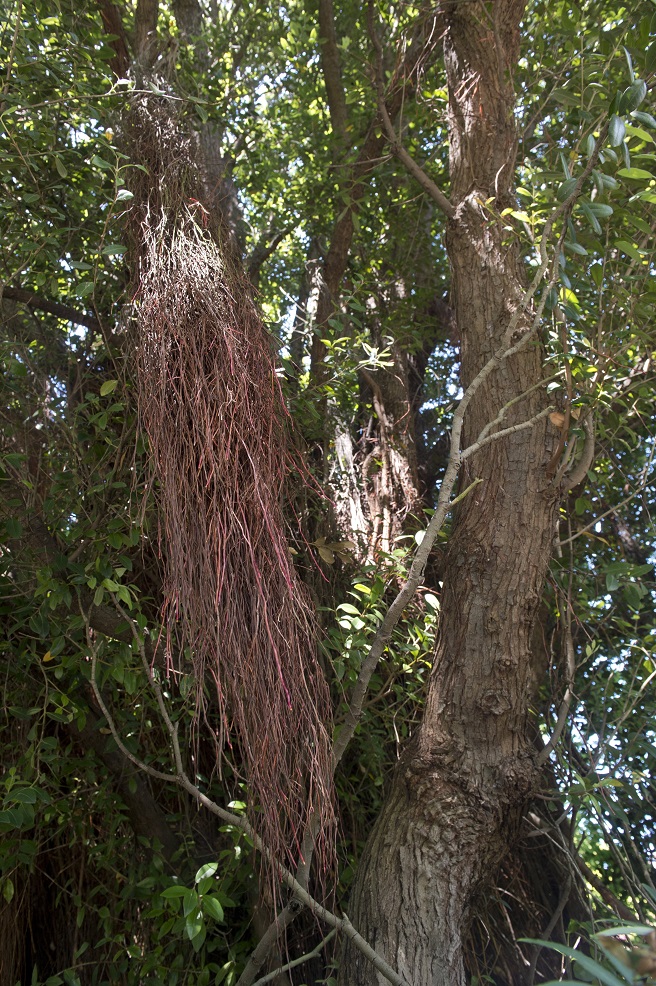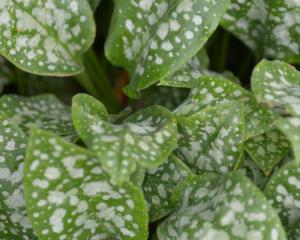
The spectacular crimson blooms are the icing on the cake as this tree has other characteristics that make it stand out all year round.
For a tree so far from its natural range, its age and size are significant, but most interesting is the abundance of aerial roots, which clothe the stems hanging from the branches like great red beards.

These roots which are known as adventitious roots, growing through the air, are a common feature of pohutukawa.
Some individuals produce large quantities, and others relatively few and can arise from almost any part of the tree.
These beards of roots may never reach the ground, or they may find crevices and pockets of soil to burrow into finding nutrients and moisture.
The favoured habitat of pohutukawa is along the coast, particularly on exposed coastal headlands and cliffs. Its ability to produce roots from sprawling branches help it to anchor and survive as they stretch outwards over the shore.
Pohutukawa is commonly used in coastal amenity plantings such as around Dunedin’s harbour walkways and cycleways.
It can be a stunning tree in a home garden, but beware the enthusiastic root systems that give it the ability to cling to sheer cliffs also have the power to crack through pipes and concrete.
Garden life is produced by Dunedin Botanic Garden. For further information contact Kate Caldwell.











